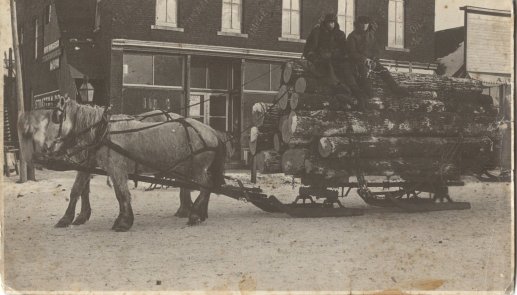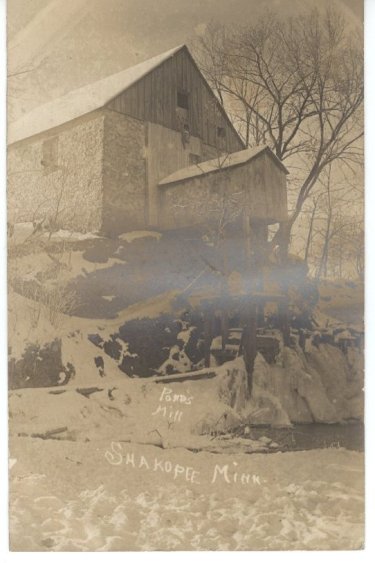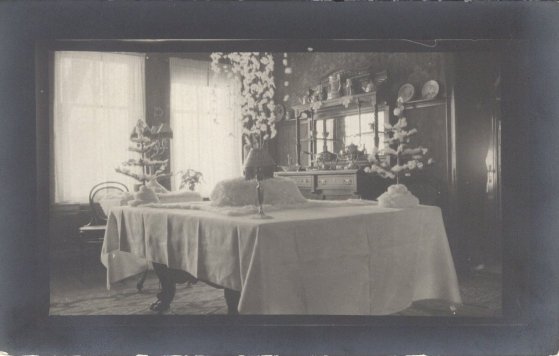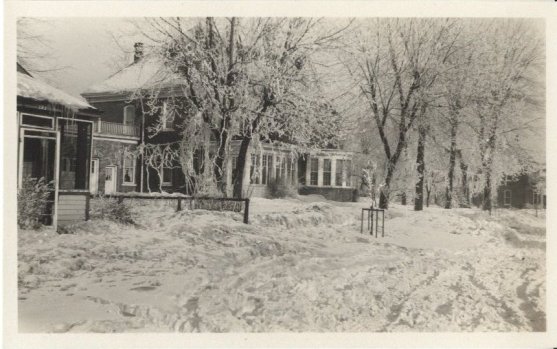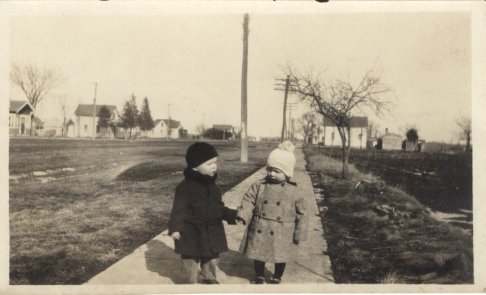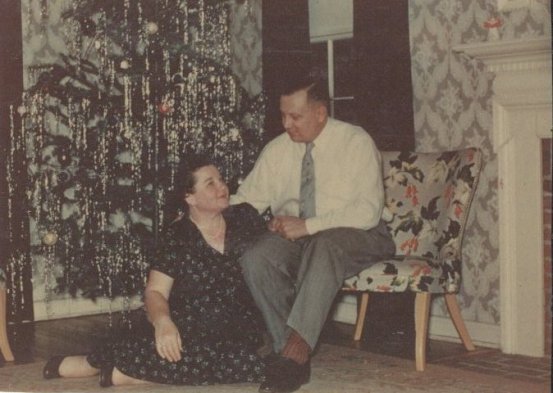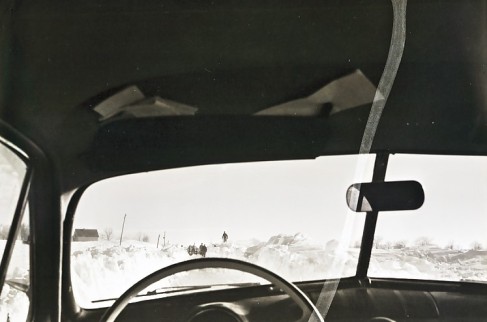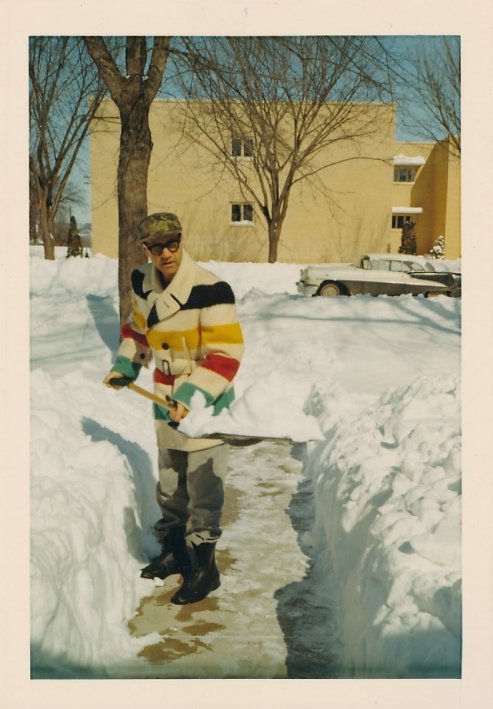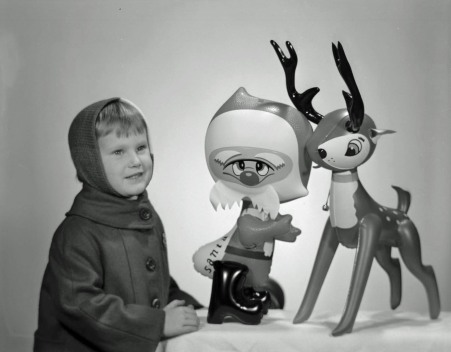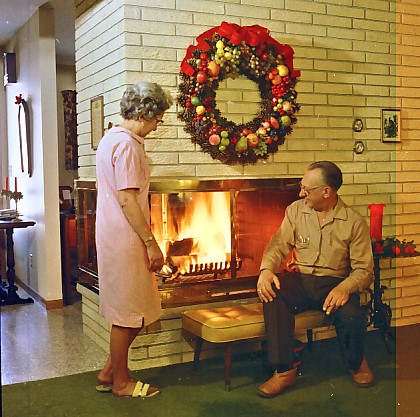A Life Changing Storm
In various settlements throughout what became Scott County, the Dakota witnessed all types of weather during their hundred years in the Minnesota River Valley. Samuel Pond, a missionary to the Dakota who lived among Chief Shakpe’s band in the 1830s, described the near-death experience of a Dakota acquaintance. Cloud Man, chief of a village on Lake Calhoun (Bde Maka Ska), told Pond of being caught in a blizzard while hunting on the plains near the Missouri River. He and his companions pulled blankets over themselves and lay down where they were, letting the snow cover them in cold, but protective pockets to wait out the storm. To his surprise, Cloud Man and each of his companions emerged the next day alive, though weak from cold. During his confinement in his little bubble of snow, Cloud Man thought about farming, a controversial occupation for the Dakota, who were primarily hunters. After the storm, he did indeed begin one of the first Dakota agricultural settlements on Lake Calhoun, an experimental village known as “Eatonville.”[i]
Early Settlers & Weather Worries
Scott County received an influx of settlers after the 1851 treaties with the Dakota that opened the land to settlement. One of the earliest pioneers to the Shakopee area, Moses Titus, described the first lonely winter of the few settlers who arrived almost before the ink on the treaties was dry:
“The winter was long, and cold, no news, no festivities, no pleasures, parties, no dancing (unless to warm freezing toes), and no papers from St. Paul or Ft. Snelling…Our town proprietor [Thomas A. Holmes] did not starve, his Indian friends brought him plenty of venison; potatoes were to be had at the old Mission site (S.W. Pond’s) and towards spring our heroes in their rambles captured a large bear. This was rare sport, and furnished them with food, and fun, for a full month.”
As Minnesota opened to European settlement, it was “pitched” to eager pioneers in various ways. Some writers tried to counter rumors of a harsh environment. Others proclaimed the vigor and “robustness” gained from the cold, dry climate. Writing in 1853, Wesley Bond strongly put forward the case for a stalwart northern temperament among the settlers: “To begin with, if you are of that incorrigible class of persons who have taken it into their brains that no part of this great globe is habitable, by reason of the cold, to a higher degree of latitude than about forty degrees north, we have no use for you.”[iii]

“A Glorious Old Storm”
March of 1899 saw a major snowfall in Shakopee. A photograph from the time shows C.J. Strunk looking over his shoveling work in front of the businesses along First Street. In front of Strunk a hitching post is dwarfed by a pile of snow. The photograph tells us something of winter weather gear at the turn of the century. Only one person in the picture is wearing what we would think of today as a winter jacket—the man at the right in the fur coat and hat. The rest have ventured out to shovel in coats and ties (though it could be that it was not all that cold that March). Another photograph taken just after the storm shows the snow removal system in 1899—two men with a horse-drawn wagon who haul the snow away. The Argus dismissed what looks from the photographs to have been a major storm, saying, “Wasn’t that a glorious old storm we had Saturday night and Sunday? There is no scarcity of snow here at this writing.”[iv]

The Armistice Day Blizzard
Even with the modern conveniences of heating, electricity, and automobiles, severe weather still wreaked havoc in Scott County in the 1940s. November 11 was Armistice Day, a day marking peace at the end of World War I. But in 1940, on the verge of another World War, the day was anything but peaceful. Fine fall weather turned abruptly into a hard-freezing rain that coated the streets. By mid-morning the snow was falling, as well as the temperature, and by midday the blizzard was in full force. Local papers describe the escalating dangers of “tornadic winds” and “15-foot drifts.” Motorists were apparently taken by surprise and had to abandon their cars as the roads became impassable. The only human deaths in Scott County were two Minneapolis men who stayed in their car near Belle Plaine to wait out the storm. One of them wrote to his girlfriend to pass the time, telling her he was quite comfortable in the heated car, and had even taken off his shoes. Snow piled up underneath the car and clogged the exhaust pipe, flooding the car with carbon monoxide and killing the men. In Shakopee, an electrical highline snapped, which sent the town into utter darkness. Those with electric heating had to wait out a very cold night. Snow plows could not get through because of all the stranded cars. In and around Belle Plaine and Shakopee, every hotel, farmhouse, and public building was filled with stranded motorists or school children seeking shelter. In New Prague, 200 turkeys froze as farmer Edward Palma tried to get them to shelter.[v]

These stories are not merely tall tales of exceptional weather. Part of their historical value is the way they show the interaction between society and our environment. Some of these interactions are humbling, putting a stop to social life as “usual” and leaving us at nature’s mercy. These stories also show how people adapted to radical changes in their environment, helping each other cope with nature’s antagonism and upholding social bonds that we rely on during times of distress. And, of course, there are lessons about preparedness and safety to be learned from every storm or disaster. Studying history is one way to prepare for future crises. If you would like to know more about this topic, visit the Scott County Historical Society on the web and search our collections at www.scottcountyhistory.org.
Edited from original article by Patrick Rodgers, SCHS 2006
[i] Samuel Pond, Dakota Life in the Upper Midwest. (St. Paul: Minnesota Historical Society Press, 1986: 10-11); Roy Meyer, History of the Santee Sioux. (Lincoln, NB: University of Nebraska Press, 1993: 49-50).
[ii] Speech by Moses Titus to the Good Templars Lodge, 1879. MHS manuscript collection C.F.612.55.T623.
[iii] Wesley Bond, Minnesota and its Resources. (NY: Redfield, 1853: 161).
[iv] Scott County Argus, March 16, 1899.
[v] Shakopee Argus-Tribune, Nov. 14, 1940; Belle Plaine Herald, Nov. 14, 1940; Belle Plaine Herald, Nov. 21, 1940.


